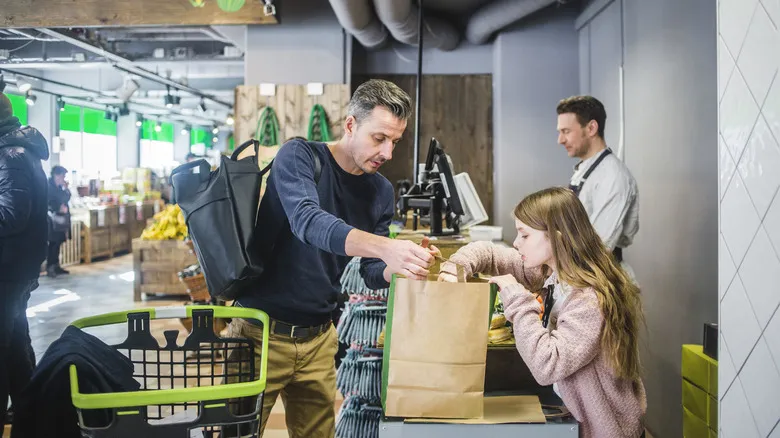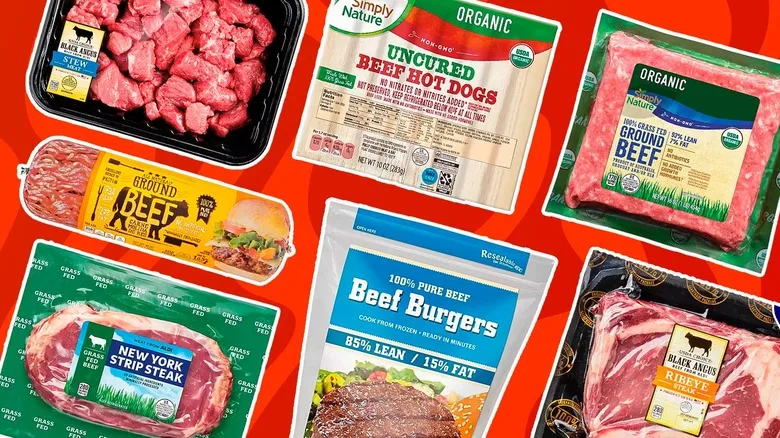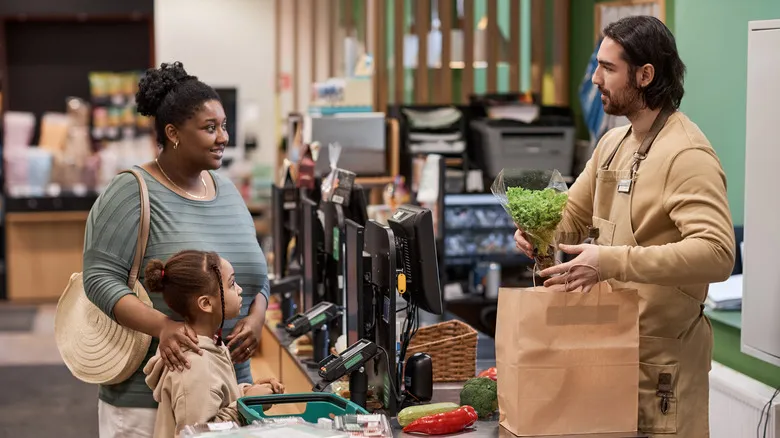Working with the bags

Before diving into how to pack your bags, it's important to consider your options. Aim to maximize the contents of each bag without overloading them. It's also wise to assess how much weight you can comfortably carry. If you're packing your own groceries, using two lighter bags instead of one large one might be more manageable. If a store employee is packing your items, request that they divide your groceries into smaller bags for easier handling.
Regarding the bags themselves, a standard plastic bag from the store typically holds around 10 items. If you have heavier items, double-bagging may be necessary. Reusable cloth or plastic bags can often accommodate twice as much, sometimes up to 50 pounds, allowing for 15 to 20 items per bag. If you're using reusable bags, consider placing a box at the bottom of each one. This not only strengthens the base of the bag but also allows you to carry it comfortably by the handles. Handles enhance convenience, while boxes provide stability. Together, they create an ideal solution for carrying a heavy load of fragile items.
Tips for bagging your items

Ideally, you should group similar items together on the conveyor belt and in your bags, such as placing cans with cans. However, this isn't always feasible. If you don't have a bag lined with a box, there are alternative methods to pack your groceries securely using a store bag. You can create a barrier at the bottom of the bag by lining the inner edges with boxes of pasta. Then, place any cans of crushed tomatoes within the pasta boxes, allowing the pasta to encase them. This creates a more stable base if you need to stack additional items on top.
If you're concerned about breakage or overloading your current bag, consider using a separate bag for pasta sauce and other bottled products. For added protection, wrap glass bottles in some of the plastic bags from the checkout area. This will provide cushioning and help prevent breakage during transport.
For frozen items, start a new bag by placing ready-made pies at the bottom, followed by frozen pizzas on top. Next, add frozen vegetables and mixed berries. Fresh produce should have its own bag, as should any meats or deli products. Lastly, to ensure your eggs for omelets and cookies for dessert remain intact, place those items in separate bags to avoid crushing. With a bit of practice, you'll never have to worry about your groceries again.
Recommended

What Is Rhubarb And How Do You Cook With It?

We Tried And Ranked Every Flavor Of Tony's Chocolonely Chocolate Bars

5 Cuts Of Beef To Buy At Aldi And 5 To Avoid

How To Buy Meat For Impressive Homemade Steak Tartare
Next up

